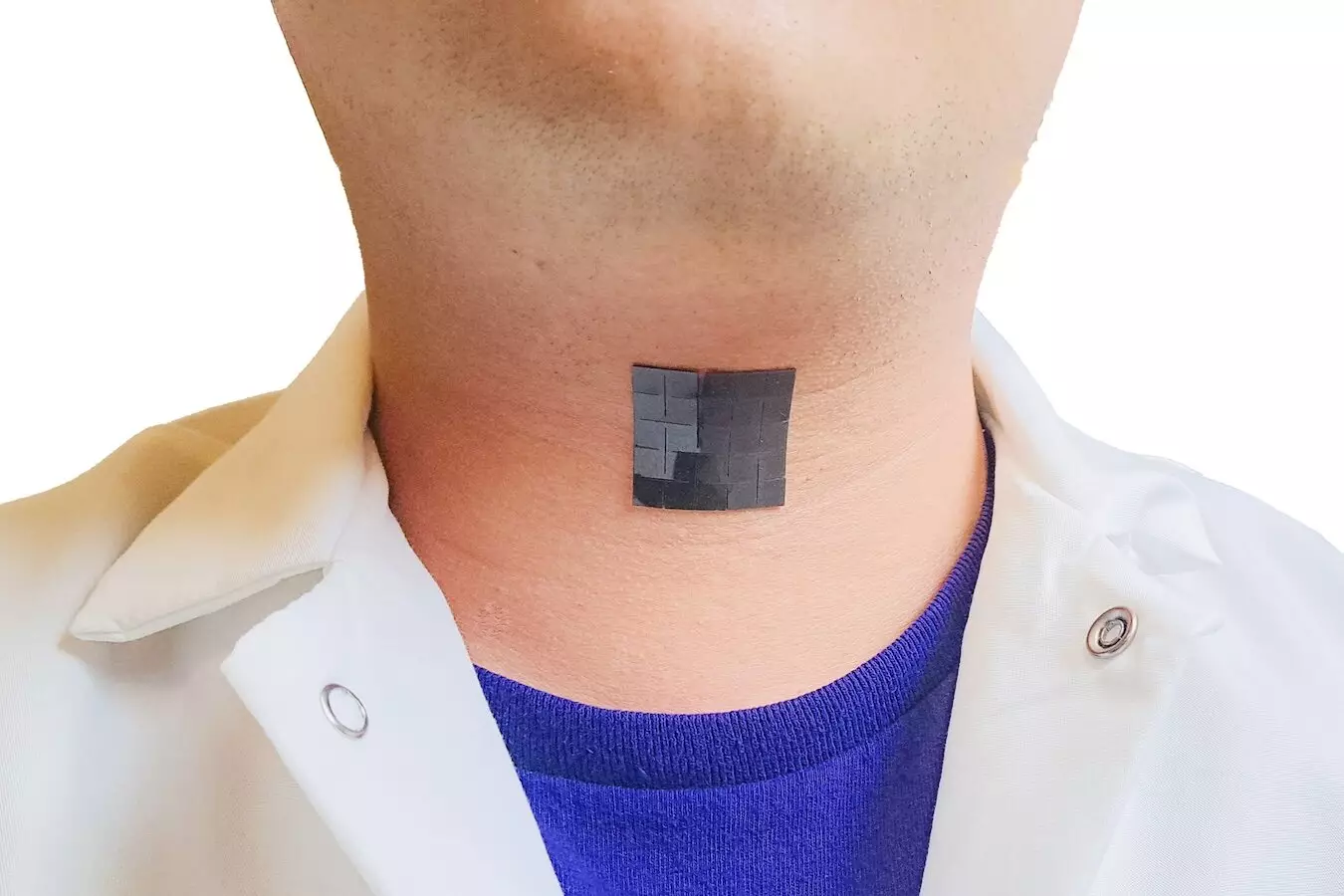People suffering from voice disorders, whether due to pathological vocal cord conditions or recovering from laryngeal cancer surgeries, often struggle to communicate verbally. However, a groundbreaking solution may soon change their lives. A team of UCLA engineers, led by Jun Chen, an assistant professor of bioengineering at the UCLA Samueli School of Engineering, has developed a remarkable device. This soft, thin, stretchy gadget, slightly larger than 1 square inch, can be attached to the skin outside the throat to assist individuals with dysfunctional vocal cords in restoring their ability to speak. The details of this cutting-edge bioelectric system are highlighted in the prestigious journal Nature Communications.
The newly invented device consists of two key components, each serving a vital function. The self-powered sensing component is responsible for detecting and converting signals produced by muscle movements within the larynx into precise electrical signals. Subsequently, a sophisticated machine-learning algorithm translates these electrical signals into speech signals. On the other hand, the actuation component plays a crucial role in transforming these speech signals into the desired voice expression. Both components are structured with layers of a biocompatible silicone compound known as polydimethylsiloxane (PDMS) and a magnetic induction layer comprising copper induction coils. Additionally, a layer containing PDMS mixed with micromagnets generates a magnetic field, allowing the device to detect changes in the magnetic field caused by mechanical forces, such as laryngeal muscle movement.
Voice disorders are prevalent among individuals of all ages and demographic groups, with research indicating that nearly 30% of people will experience such a disorder in their lifetime. Traditionally, treatments for voice disorders, such as surgical interventions and voice therapy, can be lengthy and invasive, requiring months to a year of voice recovery. However, the newly developed device offers a non-invasive, wearable option to assist patients in communicating both before and after treatment for voice disorders. This innovative solution avoids the inconveniences associated with existing devices like handheld electro-larynx devices and tracheoesophageal-puncture procedures, offering a more comfortable and effective means of communication for individuals with voice disorders.
In experiments conducted by the research team, the wearable technology was tested on eight healthy adults to evaluate its performance. Data on laryngeal muscle movement was collected, and a machine-learning algorithm correlated the signals to specific words, enabling the selection of the corresponding output voice signal through the device’s actuation component. Impressively, the system exhibited an overall prediction accuracy of 94.68%, with the participants’ voice signals accurately amplified by the actuation component. Moving forward, the research team aims to expand the device’s vocabulary through machine learning and conduct further testing on individuals with speech disorders. Notably, other contributors to the project include UCLA Samueli graduate students Ziyuan Che, Chrystal Duan, Xiao Wan, Jing Xu, and Tianqi Zheng, all of whom are members of Chen’s lab.
The innovative device developed by the UCLA engineering team has the potential to revolutionize the field of speech therapy for individuals with voice disorders. By combining cutting-edge technology with machine learning algorithms, this wearable solution offers a promising way for people to regain their voice and effectively communicate, marking a significant advancement in the treatment of voice-related conditions. With further research and development, this groundbreaking invention could significantly improve the quality of life for individuals facing challenges due to voice disorders.


Leave a Reply